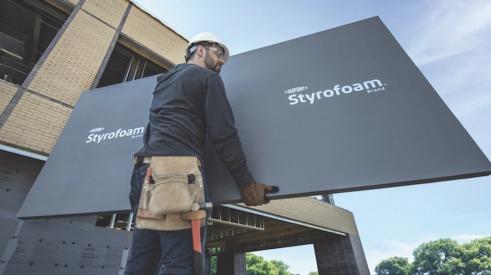AIA Releases 13 New and Updated Contract Documents
The American Institute of Architects (AIA) recently released 13 new and updated contract documents. One of the most notable changes is a new Contractor-Subcontractor Master Agreement and accompanying work order. The new agreement allows a contractor and subcontractor to agree to a predefined set of terms and conditions that apply to multiple scopes of work.
The Joint Venture Agreement for Professional Services also got a significant update. It was revamped to address the legal implications associated with joint venture business relationships.
Other documents that underwent notable changes include Master Agreements, which now align with the 2017 core AIA document updates; Instructions to Bidders, which now include designation of Bidding Documents in electronic form or paper copy; and Architect-Consultant Agreement for Special Services, which now includes the copyrights, licenses, and payment provisions of the prime agreement. Mediation was added as a precedent to binding dispute resolution.
New Report Addresses Sound Transmission of Wood-framed Assemblies
The American Wood Council (AWC) released a new report on sound transmission, “Technical Report 15 (TR15), Calculation of Sound Transmission Parameters for Wood-Framed Assemblies.”
“Building codes stipulate minimum performance requirements regarding noise transmission through certain interior walls, partitions, and floor-ceiling assemblies,” according to AWC Vice President of Engineering Brad Douglas. “This initial version of TR15 summarizes how these code provisions apply to floor-ceiling assemblies and demonstrates how wood-framed floor-ceiling assemblies can comply with a calculation-based analysis approach.”
The 2018 International Building Code provides two parameters to establish minimum acoustical requirements: Sound Transmission Class (STC) and Impact Insulation Class (IIC). Compliance with these requirements may be demonstrated either through testing or through engineering analysis based on empirical test data from other similar assemblies.
The new report shows how to use the new AWC empirical model, and may be used for analysis of wood-frame floor-ceiling assemblies to determine compliance with STC and IIC sound transmission parameters.
Cities Have Multiple Strategies to Reduce Parking Requirements
More cities are loosening parking requirements for new developments, but there is no single formula for reducing parking that will work for every community. Often, the first step is to regulate street parking for residents facing reduced in-building parking, according to representatives from Walker Consultants. Parking pricing and time restrictions make existing parking space more efficient and ensure that on-street parking spaces are available for visitors and customers.
Another effective strategy is to employ a shared parking model by activating unused office or apartment parking at times of the day when the spaces are typically empty. This cost-effective approach increases the capacity of each parking space. This also opens more land for other uses and reduces overall development costs.
Instituting paid parking via meters can fund transportation projects such as bike lanes that can reduce reliance on cars. Although some cities have used these policies to eliminate parking requirements on some new developments, most communities and developers will want to maintain some parking requirements for now, given that most Americans still rely upon cars for transportation.
Low-Cost Measures Saved Houses during Hurricane Michael
Some houses that endured Hurricane Michael were saved by low-cost reinforcements. The surviving structures include five Habitat for Humanity houses in Panama City built for modest cost. Resiliency measures that may have saved them include additional strategically placed nails and small metal connectors to fasten the roof, as well as window shutters that created a sealed package around the home.
The five Habitat houses lost some siding, an AC unit, and one window, but remained structurally sound. Homeowners whose houses were destroyed should demand that their homes are rebuilt stronger, says the president of the Insurance Institute for Business & Home Safety.
Fast-growing D.C.-area County Revamps Zoning with Resiliency, Sustainability in Mind
The County Council for fast-growing suburban Washington, D.C.’s, Prince George’s County recently approved a new zoning ordinance that could boost resilience and sustainability. The new law includes new zones for encouraging mixed-use development and higher densities at transit stations.
The ordinance reduces the minimum amount of parking required on new development and establishes development standards so that new projects emphasize connectivity to the community with more sidewalks connecting to adjacent properties and to transit, smaller front setbacks with wider sidewalks to encourage walking, and higher densities to make it easier to support a wider variety of businesses. This was the county’s third try to update the zoning ordinance within the past 10 years.
Advertisement
Related Stories
Codes + Standards
Public Comment Period Opens for National Green Building Standard Updates
The 45-day public comment period for draft 2 of the 2024 NGBS begins on April 12, 2024
Codes + Standards
Public Comment Period Opens for 2024 National Green Building Standard Update
The 45-day public comment period opened Aug. 18, and comments must be submitted by Oct. 2, 2023
Codes + Standards
The Inefficiencies of the Latest Energy Code
The 2021 edition of the International Energy Conservation Code (IECC) hampers the return on investment for builders and homebuyers







